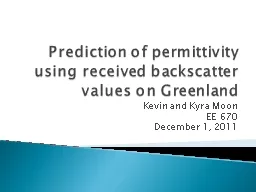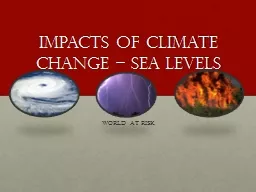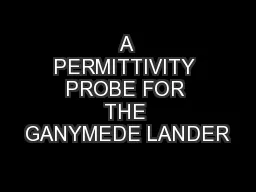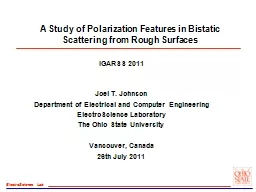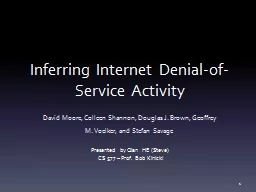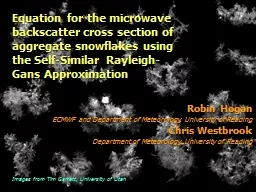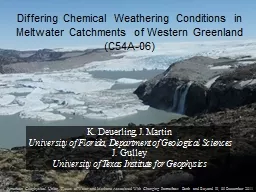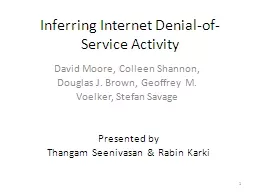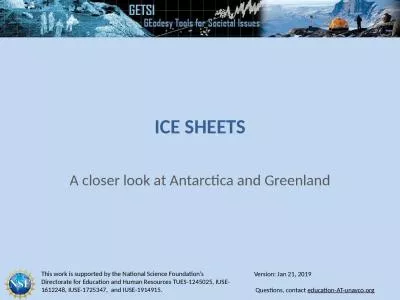PPT-Prediction of permittivity using received backscatter values on Greenland
Author : min-jolicoeur | Published Date : 2018-09-22
Kevin and Kyra Moon EE 670 December 1 2011 Background Motivation Problem Theoretical model for backscatter Simulations Estimators ML MAP Example of estimators Results
Presentation Embed Code
Download Presentation
Download Presentation The PPT/PDF document "Prediction of permittivity using receive..." is the property of its rightful owner. Permission is granted to download and print the materials on this website for personal, non-commercial use only, and to display it on your personal computer provided you do not modify the materials and that you retain all copyright notices contained in the materials. By downloading content from our website, you accept the terms of this agreement.
Prediction of permittivity using received backscatter values on Greenland: Transcript
Download Rules Of Document
"Prediction of permittivity using received backscatter values on Greenland"The content belongs to its owner. You may download and print it for personal use, without modification, and keep all copyright notices. By downloading, you agree to these terms.
Related Documents

